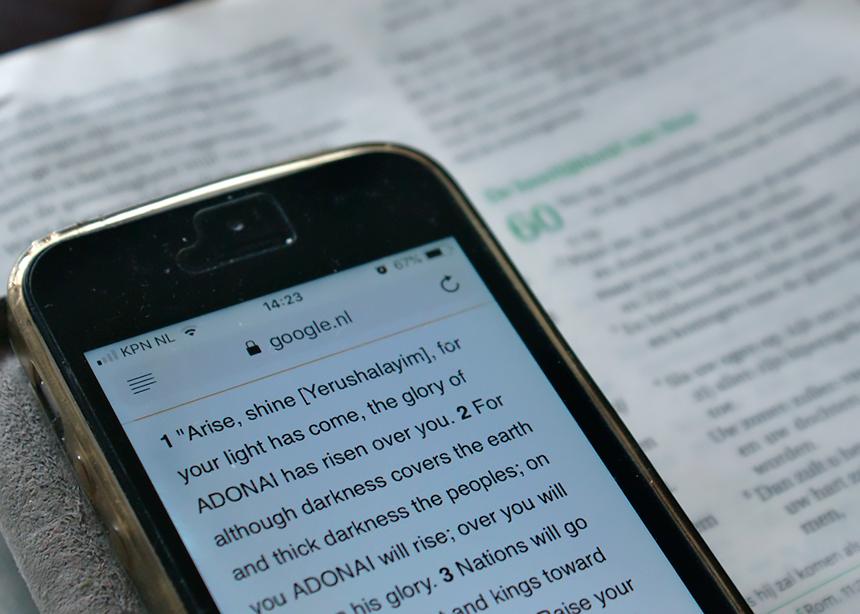A while back, a friend pondered whether it is possible to have a meaningful experience of church primarily through digital means. I doubt it. But that got me thinking about how much of our congregational experience is lived digitally.
How does your church live in a digital world? It’s essential to consider the practical, ethical and legal issues around technology in your congregation. Here are a few things to consider:
Email
Since the advent of email communication, sharing information has gotten easier. At my church, we can choose to receive the weekly announcement sheet via email. If you miss a Sunday service, all that information is still available on a phone or computer. A few paper copies are available on Sunday morning, but the use of paper is minimized.
When all members of a committee have access to email, planning for committee meetings and reporting on them is easy. The church office can share updates on events and timely prayer concerns. Yet, those of us who “speak digital” can forget that not all congregants get information in that way, which means they are excluded from the main information pipeline.
Consent and privacy can be concerns when congregations use email for communication. Using information in church directories, individual congregants have access to addresses that they can email with what you might call “church spam.” Individuals should not use addresses and phone numbers from the church directory to promote outside causes or to sell products, however good they may be. And beware of “reply all” email—it can spread confidential information with one press of a button.
Website
A well-conceived website is essential for informing potential visitors about ways they can be involved in church activities. It’s a great opportunity for your church to highlight its programs and key people, and a place to outline some key beliefs and affiliations.
Your church website becomes problematic when it is not kept up-to-date and creates confusion for online visitors and members. There is the potential for bigger problems when a website violates the privacy of congregants and shares images and in-house information with a larger audience. For example, does the posted video of your worship service contain personal prayer concerns or other sensitive information, visible to all who see it online?
The internet
I don’t see many phones in use during Sunday worship, but my church does make a wireless network available for those who use smartphones and computers at church. That means we can easily access an online version of the Bible or check a fact in a faith-formation class. But the church’s Wi-Fi capacity can also be abused, for example, if people download large amounts of data for personal use. And there can be questions around who is entitled to know and use the Wi-Fi password.
Having access to the internet means that you can download music, images and videos for sharing during worship and faith education. It’s important to remember that the creators of that content often hold legal rights to it. It’s easy to take their creations for our own use without acknowledging their sources or compensating their owners. Congregations should see this as both a moral and a legal concern.
Social media
Some of my Facebook friends belong to my church. So I can be aware when one of them is celebrating a special occasion or is experiencing a family crisis. Knowing about their lives makes it easier to offer prayers, expressions of support and practical help. Pastors who are on Facebook can be aware of pastoral needs within their congregation as well as topics that congregants converse about online. Some congregations have a closed Facebook group as a way of encouraging connections between members.
Healthy congregational life means that there is a level of trust among those who participate. Yet we sometimes forget that content on social media is visible to a great number of people outside our church’s circle of trust. Posts on Facebook, Twitter and Instagram can divulge confidential information and help spread harmful rumours about our brothers and sisters in Christ. And sensitive conversations can easily get high jacked online, when a face-to-face meeting would better build relationships.
Digital technology can enhance congregational life. But we need to be aware of how it can also disconnect us from God and from each other. And we need to remember that our digital life together is not enough to build a deep relationship with God or with our sisters and brothers in the faith.
How has your church harnessed digital tools in its ministry? Maybe it’s time to sit down for a congregational conversation about the benefits and the temptations around your church going—or being—digital.
Read more editorials:
Broad prayers in a time of fear
A word to our digital subscribers
The Spirit is moving our body
What we say online
Learning as we go





Add new comment
Canadian Mennonite invites comments and encourages constructive discussion about our content. Actual full names (first and last) are required. Comments are moderated and may be edited. They will not appear online until approved and will be posted during business hours. Some comments may be reproduced in print.